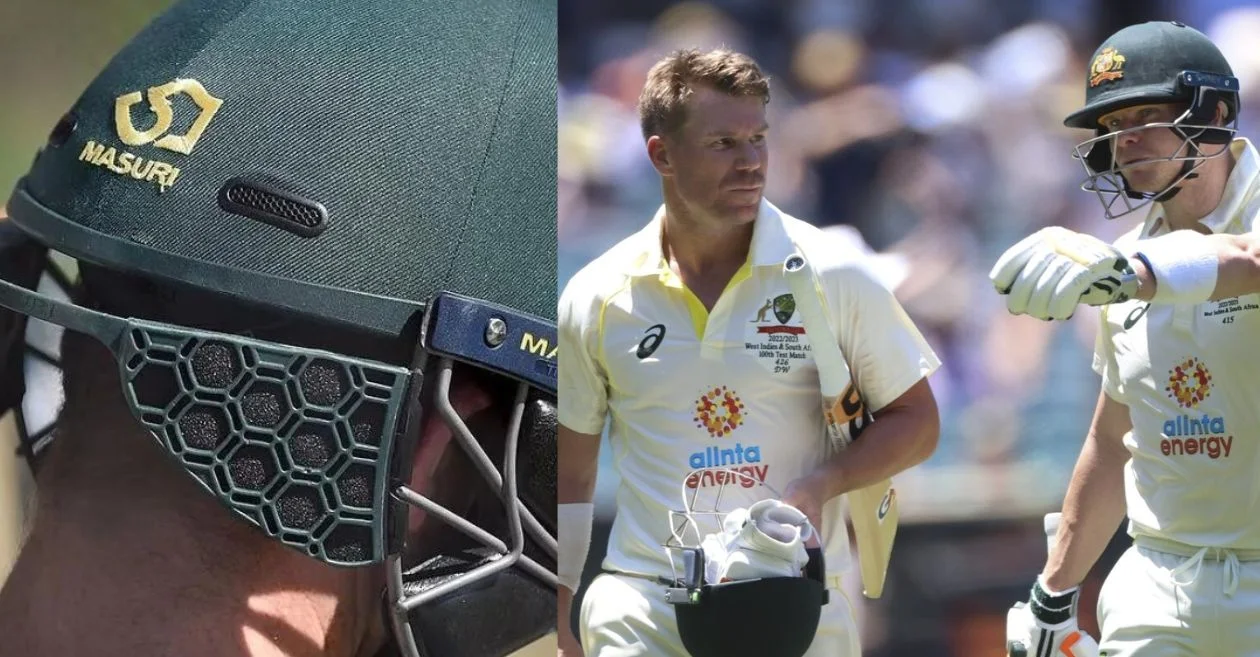Table of Contents
Cricket Australia (CA) has introduced significant changes to the playing conditions for both domestic and international players, with one of the most notable changes being the mandatory use of neck guards for Australian players starting from October 1.
This rule will require players to wear neck guards on their helmets when facing fast or medium-paced bowling, excluding spinners, wicketkeepers, and close-in fielders. This development has stirred attention due to resistance from high-profile players such as Steve Smith and David Warner, who have historically avoided using neck guards.
Protecting the head and neck is extremely important: Cricket Australia
Smith, Warner, and Usman Khawaja are among the few players who have rarely used neck guards since their introduction in 2015. The neck or stem guards were designed in response to the tragic death of Phillip Hughes. However, Smith had notably worn a neck protector while playing for Sussex ahead of the 2023 Ashes, complying with the England and Wales Cricket Board’s (ECB) rule for mandatory neck protectors, which was enforced from October 2022.
Despite objections from some players, CA has emphasized the importance of head and neck protection. CA’s head of cricket operations, Peter Roach, in an official statement, said, “Protecting the head and neck is extremely important in our sport. The neck protector product has come a long way in recent years, and the decision to make them mandatory comes off the back of a lot of advice and consultation with a wide range of experts and stakeholders.”
Also READ: Asia Cup 2023 Super 4s, PAK vs SL – Broadcast and live streaming details – When and where to watch in India, Australia, Pakistan, US, Canada, UK, UAE & other countries
Other notable changes in the playing conditions
Mandatory neck guards are just one of several changes to CA’s playing conditions for the upcoming 2023-24 season. Another notable change is the adjustment to the automatic six rule for balls that hit the roof at Marvel Stadium in the Big Bash League (BBL). Umpires will now have the discretion to decide whether the ball was heading over the boundary. If not, it will be deemed a dead ball.
CA has also implemented measures to expedite play in the BBL, including time limits on injury stoppages and streamlining stumping reviews. Under the new rules, umpire reviews for a stumping will no longer include a TV umpire review for caught behind; the TV official will solely adjudicate on the stumping. Captains will be required to use the DRS to challenge a caught-behind decision, and the review must be initiated before the TV umpire’s stumping decision.
Moreover, on-field injury assessments, excluding concussion assessments, are now limited to a five-minute window. Players requiring further treatment will need to leave the field, potentially leading to batters being forced to retire hurt. CA has also aligned its rules by removing the Covid-19 substitute rule from its playing conditions, in line with changes made by the International Cricket Council (ICC).
